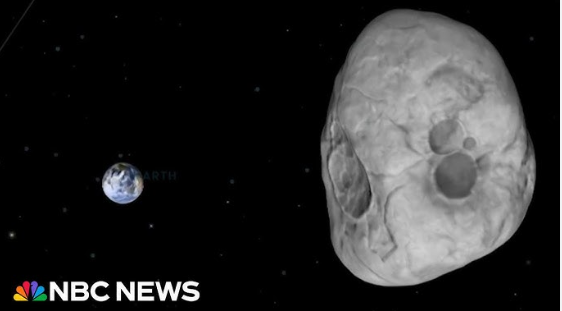NASA Asteroid Alert: Is Earth at Risk in 2032?
NASA has confirmed that an asteroid, currently hurtling through space, has a slight chance of colliding with Earth in 2032. This news has sparked global concern, with astronomers and space agencies closely monitoring its trajectory. The asteroid in question, officially named 2013 TV135, has been added to NASA’s list of potential Earth impact risks, raising questions about planetary defense measures and the future of space exploration.

Asteroid 2032: What We Know So Far
Discovered by Ukrainian astronomers in 2013, asteroid 2013 TV135 measures approximately 1,300 feet (400 meters) in diameter. According to NASA, this space rock has a 1 in 63,000 chance of impacting Earth on October 26, 2032. While these odds may seem low, the potential impact could be catastrophic, leading to massive destruction and climate-altering consequences.
NASA’s Near-Earth Object (NEO) Program has classified the asteroid as a Potentially Hazardous Object (PHO) due to its size and proximity to Earth. Scientists are using advanced telescopes and radar systems to track the asteroid’s movements and refine impact predictions.
Potential Impact of Asteroid 2032
If asteroid 2013 TV135 were to collide with Earth, the consequences would be severe. Scientists estimate that an impact could release energy equivalent to 2,500 megatons of TNT—significantly more powerful than the largest nuclear bomb ever detonated. Such an event could lead to regional devastation, tsunamis, and even global climate disruptions.
Experts suggest that even if the asteroid does not directly strike Earth, its close pass could have gravitational effects on our planet’s orbit or atmosphere. Space agencies worldwide, including NASA and the European Space Agency (ESA), are developing strategies to mitigate such threats through deflection technologies and asteroid monitoring programs.
NASA’s Plan to Prevent an Asteroid Impact
NASA has been actively researching ways to prevent asteroid collisions through its Planetary Defense Coordination Office (PDCO). One of the most promising strategies is the DART (Double Asteroid Redirection Test) mission, which successfully tested kinetic impactor technology in 2022 by altering the orbit of an asteroid in space.
In the case of asteroid 2032, NASA is considering various mitigation techniques, including:
- Kinetic Impactor: Sending a spacecraft to crash into the asteroid to alter its trajectory.
- Gravity Tractor: Using a spacecraft’s gravitational pull to gradually change the asteroid’s path.
- Nuclear Deflection: Deploying a nuclear explosion near the asteroid to push it off course.
While none of these methods have been tested on a large-scale impact threat, continued advancements in space technology may provide a viable solution before 2032.
Should We Be Worried?
NASA reassures the public that the risk of impact remains extremely low. However, asteroid 2032 serves as a reminder of the importance of space monitoring and planetary defense. Scientists emphasize that early detection is key to preventing catastrophic impacts, which is why global space agencies are continuously improving their tracking systems.
Despite the low probability, NASA is urging governments to invest in asteroid detection and deflection technologies to prepare for future threats. The success of the DART mission has proven that asteroid redirection is possible, but more research is needed to refine these techniques.
The Future of Asteroid Monitoring
NASA’s upcoming NEO Surveyor Mission, set to launch in the next few years, will enhance our ability to detect hazardous asteroids much earlier. This infrared space telescope will identify and track potentially dangerous space rocks, giving humanity more time to respond to potential threats.
Additionally, private space companies and international agencies are collaborating on asteroid mining and deflection projects, which could transform how we approach planetary defense. The growing focus on asteroid exploration may even lead to technological breakthroughs that benefit space travel and resource utilization in the future.
Final Thoughts
While asteroid 2032 has captured the world’s attention, experts stress that there is no immediate cause for panic. NASA and other space agencies are actively monitoring the situation and developing strategies to safeguard Earth from potential asteroid threats. The discovery of 2013 TV135 underscores the importance of continued investment in planetary defense and space exploration.
As we approach 2032, scientists will gather more data to refine impact predictions and determine the best course of action. In the meantime, the world watches closely, knowing that humanity’s ability to protect itself from cosmic dangers is rapidly evolving.
Stay tuned With https://boldlyamericana.com/ for updates on NASA’s asteroid tracking efforts and the latest developments in planetary defense.